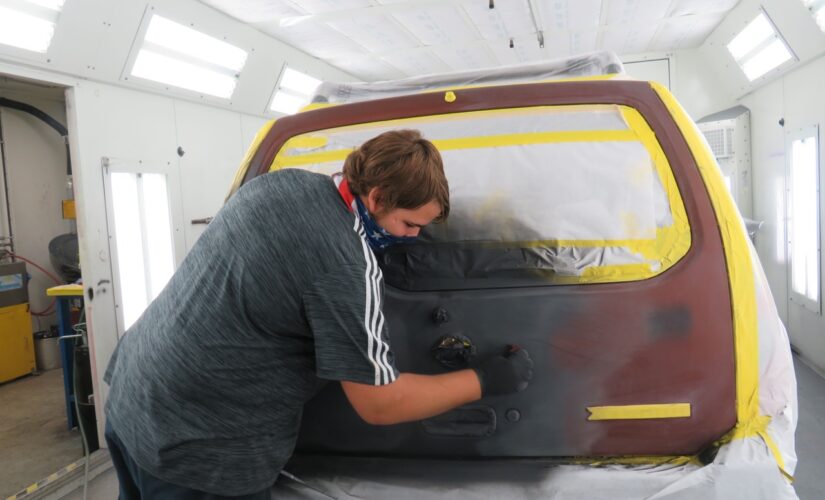Auto Collision & Repair
(47.0603)
Program Description
CCTI_AutoCollisionRepair_Essential skills chart
This is an instructional program that prepares individuals to apply technical knowledge and skills to repair damaged automotive vehicles such as automobiles and light trucks. Students learn to examine damaged vehicles and estimate cost of repairs; remove, repair and replace upholstery, accessories, electrical and hydraulic window and seat operating equipment and trim to gain access to vehicle body and fenders; remove and replace glass; repair dented areas; replace excessively damaged fenders, panels and grills; straighten bent frames or unibody structures using hydraulic jacks and pulling devices; and file, grind and sand repaired surfaces using power tools and hand tools. Students refinish surfaces by painting with primer and a finish coat. Damage resulting from everyday vehicle collisions can be repaired, and vehicles can be refinished to look and drive like new. Automotive body repairers, often called collision repair technicians, straighten bent bodies, remove dents, and replace crumpled parts that cannot be repaired. They work alone, with only general direction from supervisors, or as specialists on a repair team. In some shops, helpers or apprentices assist experienced repairers. If the vehicle is heavily damaged, an automotive body repairer might start by realigning the frame. Unibody vehicles, which are designs built without frames, must be restored to precise factory specifications for the vehicle to operate correctly. For these vehicles, repairers use benchmark systems to accurately measure the amount each section is out of alignment, and operate hydraulic machinery to return the vehicle to its original shape. Once the frame is aligned, repairers can begin to repair or replace damaged body parts. Body repairers also repair or replace the plastic body parts that are increasingly used on new vehicles. They remove damaged panels and identify the type and properties of the plastic used. Repairers replace plastic parts that are badly damaged or very difficult to repair. Some body repairers specialize in fixing fiberglass car bodies. It is possible for body repairers to specialize in installing and repairing glass in automobiles and other vehicles. Automotive glass installers and repairers remove broken, cracked, or pitted windshields and window glass. Glass installers apply a moisture-proofing compound along the edges of the glass, place the glass in the vehicle, and install rubber strips around the sides of the windshield or window to make it secure and weatherproof. Most automotive body repairers work a standard 40 hour week. More than 40 hours a week may be required when there is a backlog of repair work to be completed. Collision repair programs may be offered in high school or in postsecondary vocational schools and community colleges. Courses in electronics, physics, chemistry, English, computers, and mathematics provide a good background for a career as an automotive body repairer. Most training programs combine classroom instruction and hands on practice. Trade and technical school programs typically award certificates to graduates after six months to a year of collision repair study. Some community colleges offer two year programs in collision repair. Automotive technology is rapidly becoming more sophisticated, and most employers prefer applicants who have completed a formal training program in automotive body repair or refinishing. Most new repairers complete a segment of this training on the job. Many repairers, particularly in urban areas, need a national certification to advance past entry level work. Fully skilled automotive body repairers must have good reading ability and basic mathematics and computer skills. Restoring unibody automobiles to their original form requires repairers to follow instructions and diagrams in technical manuals and to make precise three dimensional measurements of the position of one body section relative to another. In addition, repairers should enjoy working with their hands and be able to pay attention to detail while they work.
